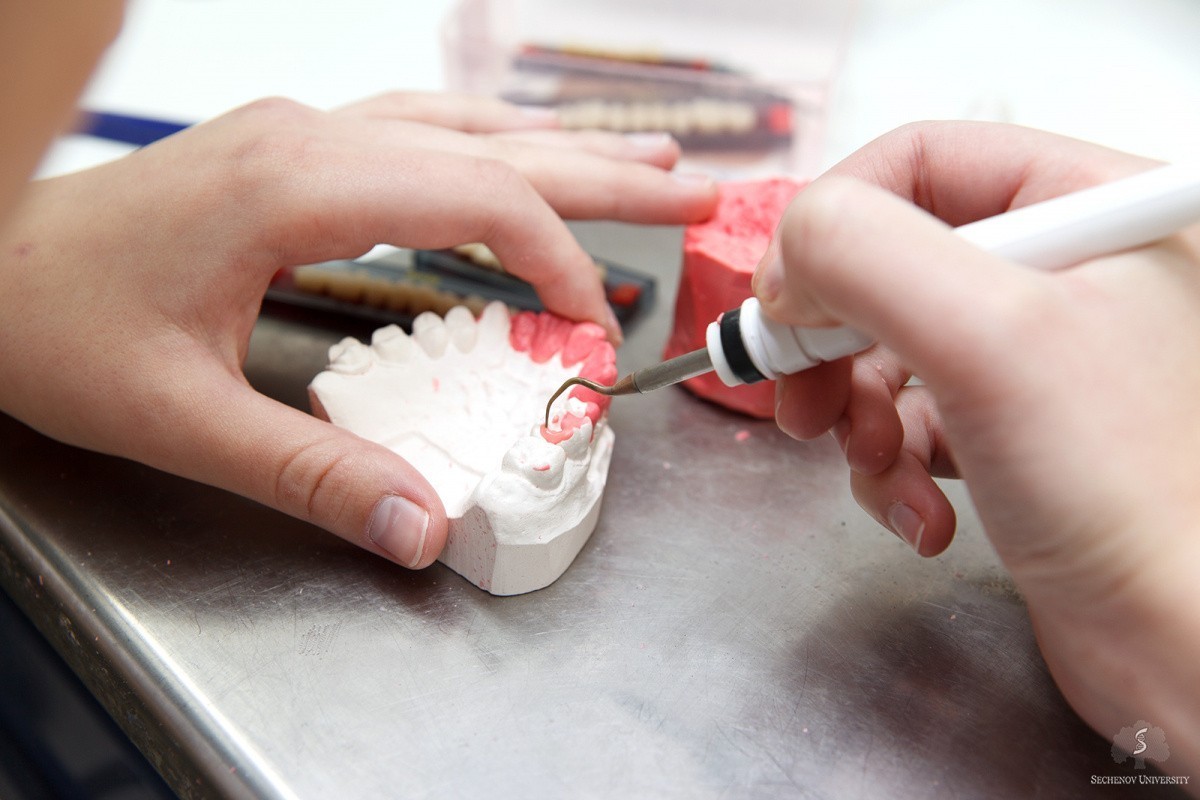-
About University
- Mission & Brand Strategy
- University Leadership
- Rector's Welcome
- History
- Regulatory Documents
- Contacts
- Staff
- International Recruitment
- Partners
Applicants- Why Sechenov University
- Degree Programmes in English
- Preparatory Courses
- Non-Degree Programmes
- Transfer from other Institutions
24.07.2020Sechenov University dentists analyse polishing of cavity fillers
 The researchers have found major differences in the roughness of the filling surfaces, originating from the treatment mode. It can be important for the selection of the appropriate cavity filling and treatment plan for the patients who suffer from caries, to achieve the best visible effect.
The researchers have found major differences in the roughness of the filling surfaces, originating from the treatment mode. It can be important for the selection of the appropriate cavity filling and treatment plan for the patients who suffer from caries, to achieve the best visible effect.
Today, dentists have a large number of available approaches to fill tooth cavities. The cavities are the manifestation of caries and present a significant issue for many people who suffer from toothache and need to restore their teeth — also for aesthetic purposes. Some of the best restorative materials are nanocomposites — they have excellent mechanical characteristics, high flexibility, and re-mineralising properties. The scientists of the Department of Therapeutic Dentistry at Sechenov University have analysed different nanocomposites used as fillings, and the mode of their application, to establish the best combinations for the smooth composite surface. The results have been published in Nanomaterials.
The study authors used 126 caries-free human third molars extracted from the patients who needed tooth removal according to their treatment plan and consented to the use of their teeth for research. Class V cavities were introduced on the buccal surfaces with a diamond bur, and the teeth were treated with 3 different A2-shade nanocomposite resins. Each group of specimens received different surface treatment.
In the first finishing–polishing sequence, the fillings were treated sequentially with medium grit, fine grit, and extra-fine grit aluminium oxide abrasive discs. In the second type of the procedure, the specimens were treated with one-step diamond-impregnated silicone polishers with aluminium oxide, followed by brushes with fibres impregnated with silicon carbide abrasive particles. In the third sequence, the specimens were treated with one-step diamond-impregnated silicone polishers with aluminium oxide, followed by brushes and polishing paste with aluminium oxide. The treatment was performed until visible gloss was achieved, as usually happens when the procedure is done on a patient.
The researchers then analysed the surface roughness in 3 zones (composite surface, composite–enamel interface, and composite–cementum interface) and found that the coarsest surface was in the latter case, followed by the composite–enamel interface and the composite surface. Moreover, the surface unevenness considerably varied because of the finishing–polishing sequence. Aluminium oxide abrasive discs performed better on the composite surface and composite–enamel interface, while diamond-impregnated silicone polishers with aluminium oxide and brushes were more advantageous for the composite–cementum interface.
The composite type did not have much impact on the surface roughness, but for the composite–enamel and composite–cementum interfaces the roughness depended on the filling. Also, the time to achieve visible gloss varied for different resins.
The analysis performed in this research paper establishes the differences that arise from using various materials as tooth cavity fillings and finishing–polishing sequences. However, since the achievement of visible gloss cannot be used as a clinical criterion of sufficient polishing, the results will require further evaluation in a clinical study. The final goal is to create such combinations of the cavity filling and finishing–polishing sequence which would fit the needs of each patient.
Read more: Babina K, Polyakova M, Sokhova I, Doroshina V, Arakelyan M, Novozhilova N. The Effect of Finishing and Polishing Sequences on The Surface Roughness of Three Different Nanocomposites and Composite/Enamel and Composite/Cementum Interfaces. Nanomaterials (2020).Embed on website
Sechenov University dentists analyse polishing of cavity fillers
 The researchers have found major differences in the roughness of the filling surfaces, originating from the treatment mode. It can be important for the selection of the appropriate cavity filling and treatment plan for the patients who suffer from caries, to achieve the best visible effect.
The researchers have found major differences in the roughness of the filling surfaces, originating from the treatment mode. It can be important for the selection of the appropriate cavity filling and treatment plan for the patients who suffer from caries, to achieve the best visible effect.
Today, dentists have a large number of available approaches to fill tooth cavities. The cavities are the manifestation of caries and present a significant issue for many people who suffer from toothache and need to restore their teeth — also for aesthetic purposes. Some of the best restorative materials are nanocomposites — they have excellent mechanical characteristics, high flexibility, and re-mineralising properties. The scientists of the Department of Therapeutic Dentistry at Sechenov University have analysed different nanocomposites used as fillings, and the mode of their application, to establish the best combinations for the smooth composite surface. The results have been published in Nanomaterials.
The study authors used 126 caries-free human third molars extracted from the patients who needed tooth removal according to their treatment plan and consented to the use of their teeth for research. Class V cavities were introduced on the buccal surfaces with a diamond bur, and the teeth were treated with 3 different A2-shade nanocomposite resins. Each group of specimens received different surface treatment.
In the first finishing–polishing sequence, the fillings were treated sequentially with medium grit, fine grit, and extra-fine grit aluminium oxide abrasive discs. In the second type of the procedure, the specimens were treated with one-step diamond-impregnated silicone polishers with aluminium oxide, followed by brushes with fibres impregnated with silicon carbide abrasive particles. In the third sequence, the specimens were treated with one-step diamond-impregnated silicone polishers with aluminium oxide, followed by brushes and polishing paste with aluminium oxide. The treatment was performed until visible gloss was achieved, as usually happens when the procedure is done on a patient.
The researchers then analysed the surface roughness in 3 zones (composite surface, composite–enamel interface, and composite–cementum interface) and found that the coarsest surface was in the latter case, followed by the composite–enamel interface and the composite surface. Moreover, the surface unevenness considerably varied because of the finishing–polishing sequence. Aluminium oxide abrasive discs performed better on the composite surface and composite–enamel interface, while diamond-impregnated silicone polishers with aluminium oxide and brushes were more advantageous for the composite–cementum interface.
The composite type did not have much impact on the surface roughness, but for the composite–enamel and composite–cementum interfaces the roughness depended on the filling. Also, the time to achieve visible gloss varied for different resins.
The analysis performed in this research paper establishes the differences that arise from using various materials as tooth cavity fillings and finishing–polishing sequences. However, since the achievement of visible gloss cannot be used as a clinical criterion of sufficient polishing, the results will require further evaluation in a clinical study. The final goal is to create such combinations of the cavity filling and finishing–polishing sequence which would fit the needs of each patient.
Read more: Babina K, Polyakova M, Sokhova I, Doroshina V, Arakelyan M, Novozhilova N. The Effect of Finishing and Polishing Sequences on The Surface Roughness of Three Different Nanocomposites and Composite/Enamel and Composite/Cementum Interfaces. Nanomaterials (2020).



